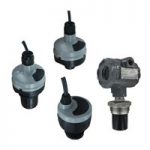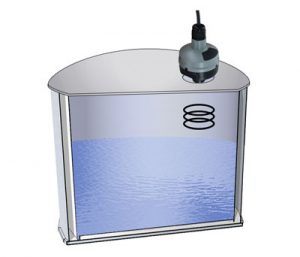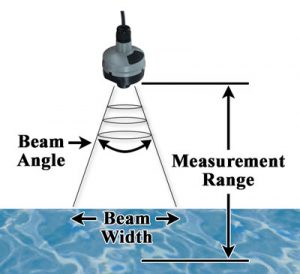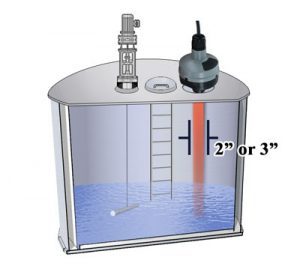
The Mercoid® division of Dwyer Instruments, Inc. offers several series of Ultrasonic Level Transmitters with different features suitable for different applications, including the: ULT, ULSL, ULSM, and ULSS.
Ultrasonic Level Transmitters are a non-contact level sensing technology that works similarly to radar or sonar. The piezoelectric transducer generates high frequency sound waves in the ultrasonic range. Ultrasonic frequencies are above the levels of sound that humans can hear, typically between 40 and 200 kHz for a level transmitter. The piezoelectric transducer will also generate an electrical signal from receiving an ultrasound, so the same piezoelectric crystal both creates and receives ultrasonic waves.

Ultrasonic Level Transmitters emit high-frequency sound pulses from the base of the transducer. Each pulse travels through the air, reflects off the liquid’s surface, and then the echo returns back to the transducer where it is received. The sensor measures the time interval from pulse transmission to echo receipt and translates this time into distance or liquid level based on the speed of sound.
The velocity of sound varies due to air temperature changes. All Dwyer Instruments, Inc. Ultrasonic Level Transmitters include an integral temperature sensor to compensate for changes in the velocity of sound from the air temperature.
The ultrasonic pulse from the transducer spreads out in a conical shape as it travels away from the sensor. This is referred to as the beam angle and is typically from 8 to 12 degrees. The beam width is the width of the sensing area that the sound pulse hits and reflects off of. If intrusions or obstructions are in the way of the pulse before it reaches the liquid’s surface, false echoes can be created, resulting in bad readings.

The Ultrasonic Level Transmitters utilize advanced mapping software, creating an effective measuring surface or beam width of no more than 3″ in diameter extending from the tip of the sensor down, making ladders, pipes, and other tank intrusions/obstructions non-problematic.


